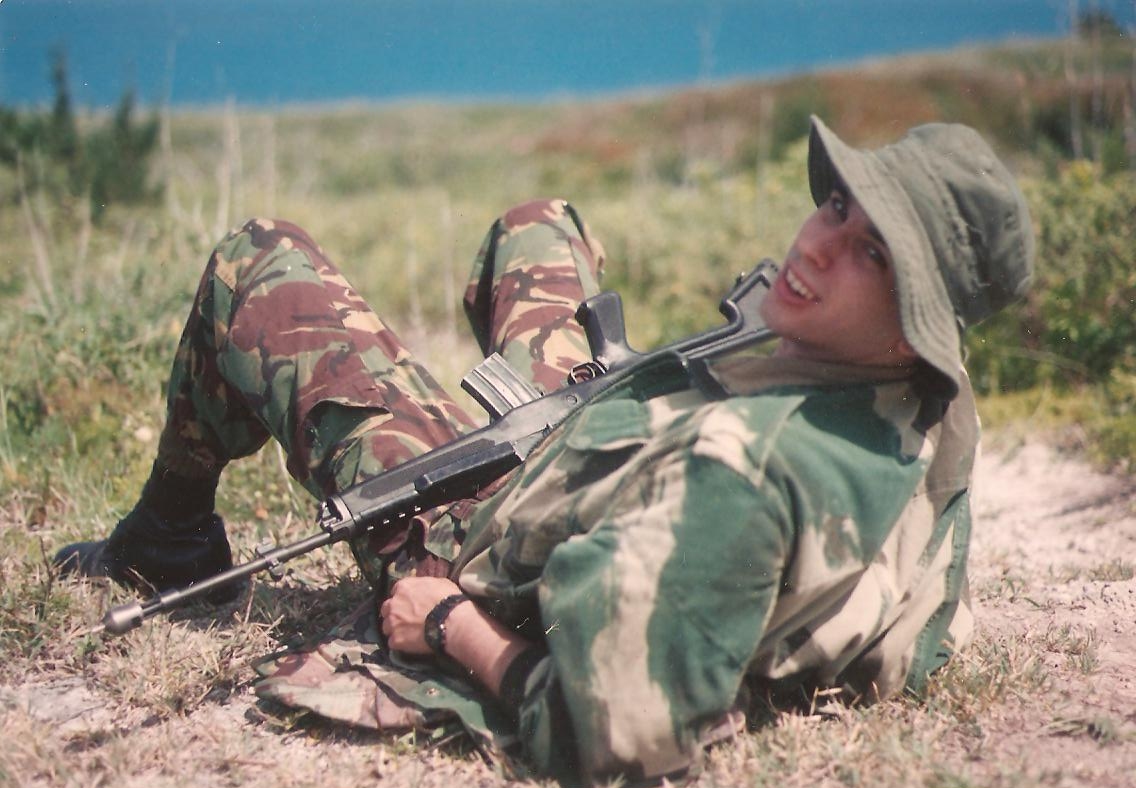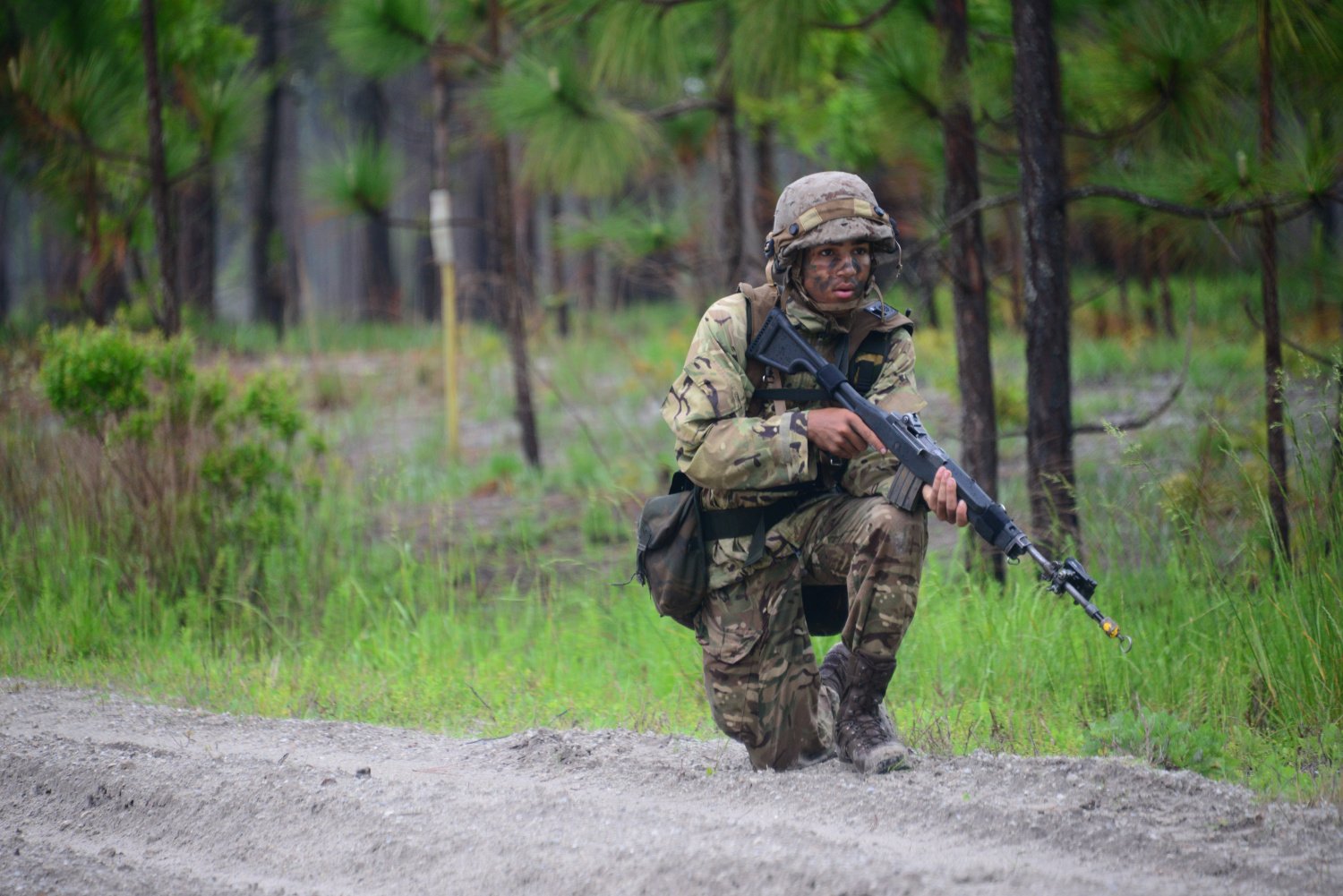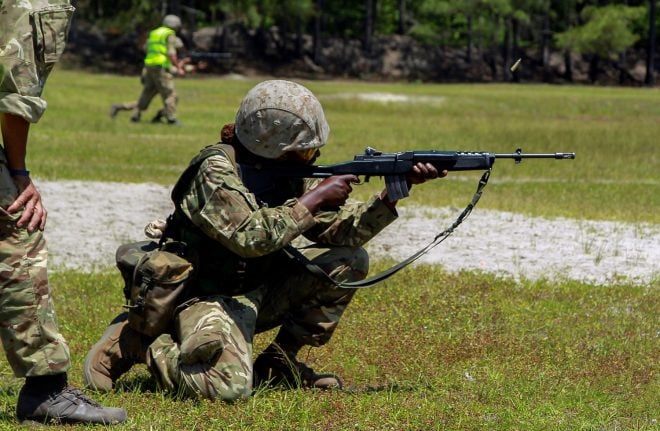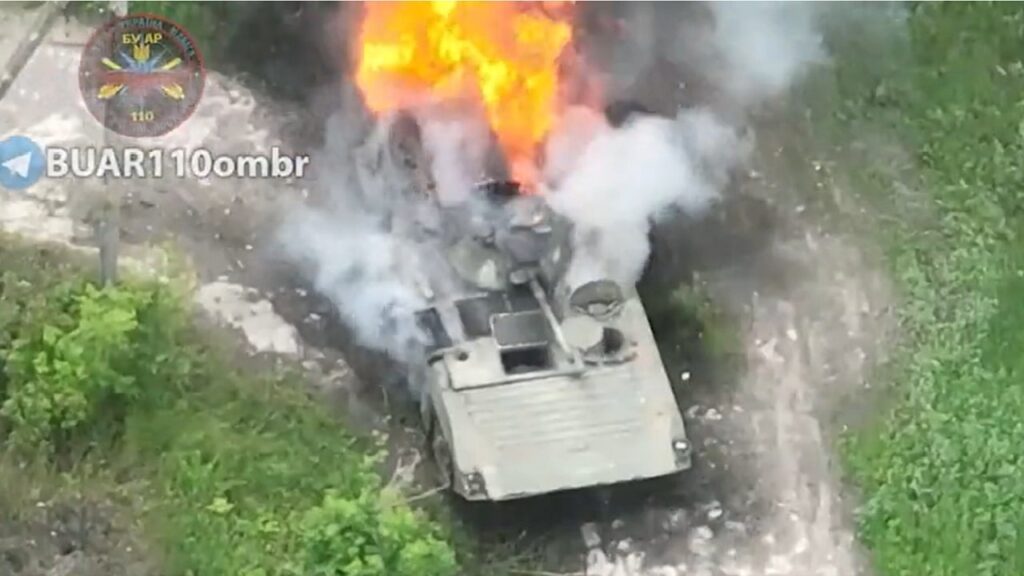I’ve covered quite a few unique and interesting rifles in the Service Rifles Around the World series, and today, I’m covering probably one of the more interesting ones I’ve ever seen (I’m also cheating a bit since this rifle was replaced, and taken out of service in 2015.) The rifle is the Ruger Mini 14, and the unit using it is the Royal Bermuda Regiment.
Bermuda is a British Overseas Territory and is protected by the British military. The Royal Bermuda Regiment is a single 350-men-strong territorial infantry battalion that is made up primarily of conscripts and acts mostly as a reserve unit for territorial defense as well as an internal security force. For many years, its members were armed with the Ruger Mini 14.
Into the Ruger Mini 14

Before the Mini 14, the Bermuda Regiment was carrying the larger, heavier, and full-powered L1A1 rifles; its move to the Ruger in 1983 followed the same logic as America’s move to the M16.
The Mini 14 is a lightweight, semi-automatic, gas-operated rifle designed in 1973 by James Sullivan and William Ruger who designed it to be a smaller, scaled-down version of the M14 rifle. The gun is not a direct clone or rechambering of the design, however: Ruger made some changes to the gas system to simplify it and used a cast receiver for a lower overall cost.
The Mini 14 uses detachable magazines, which can carry from five to 30 rounds. The Bermuda Regiment went with the 20-round magazines. The rifle fires the .223 Remington cartridge, although 5.56 models also exist.
Related: The AR-1 – The drone that can fire an assault rifle
The Mini 14 GB

GB stands for government barrel, and the gun featured a thicket barrel, as well as a threaded barrel with a flash hider and bayonet lug. It’s worth noting that Ruger also produced the AC-556 variant, which was a selective-fire assault rifle, but the Royal Bermuda Regiment stuck to the semi-auto-only design. For a territorial defense force on a tight budget using conscripts, it made sense to stick to semi-auto only.
Further, lighter, smaller rifles with lighter ammo work better for the average soldier as most engagement distances are within 300 meters, and at these ranges, these rifles excel.
The Mini 14 GB models were initially adopted by the Royal Bermuda Regiment with wooden stocks, which was an odd choice in 1983. Wood stocks don’t always make for great military rifles as they absorb water and can swell. They also tend to be more sensitive to the environment and suffer breakage more often. In short order, the Royal Bermuda Regiment moved to Choate polymer stocks with pistol grips. The rifles didn’t offer much more accessorization and the Royal Bermuda Regiment doesn’t seem to use optics, grenade launchers, lasers, or anything else with the Mini 14.
Related: The FG-42 – The odd Nazi rifle created after a paratrooper disaster
Why is the rifle a weird choice?

By 1983 the design was already a bit outdated. The Mini 14 has an open-top receiver that makes it much more prone to fouling and attracts dirt and mud quicker than a three-year-old boy leading to more failures. Even in the 1980s, enclosed systems were common.
The Mini 14 was also inaccurate compared to other rifles of the time. (In 2003 Ruger overhauled the entire system to fix the accuracy issues.)
Additionally, these rifles were also tough to accessorize. Adding optics to a base model, Mini 14, wasn’t easy, especially in 1983. In fact, adding any accessories besides the bayonet would be tough to accomplish due to the weapon’s awkward design.
Although we don’t know for what price Ruger sold the Mini 14 rifles to Bermuda, on average they tended to be fairly expensive for what they were. I’d imagine American surplus M16A1s would be cheaper and ultimately would have been better rifles for the Royal Bermuda Regiment. Who knows, maybe Ruger gave them a bargain just to have their rifle enter military service.
End of the Mini
Surprisingly these rifles lasted from 1983 until 2015 when they were finally decommissioned. In their place, the Royal Bermuda Regiment received L85A2 rifles, the standard arm for the British military. At this timeframe, the Royal Bermuda Regiment began receiving and wearing British uniforms and obtaining British military equipment.
The M85 series has its own drama and poor history of reliability. However, the A2 series has seemingly worked out all the bugs. These modern rifles utilize optics, lights, lasers, and more, and they are ultimately a much better option than the Mini 14 GBs.
I do wonder what became of those Mini 14s. They’d be quite the collector’s item these days.
Feature Image courtesy of United States Marine Corps
Read more from Sandboxx News
- Why America’s new NGAD fighter could be a bargain, even at $300 million each
- Airmen in Kangerlussuaq, a military town nobody has heard of
- ‘Extraction 2’ is a really fun and action-packed movie
- Why today’s military AI isn’t capable of ‘going rogue’
- SPECS: AIM-120 advanced medium-range air-to-air missile (AMRAAM)





